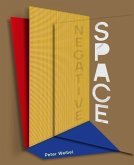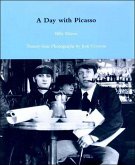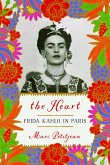A lavishly illustrated volume that views Russian avant-garde art through the lens of Dada.
This is the first book to approach Russian avant-garde art from the perspective of the anti-art canons associated with the international Dada movement. The works described and documented in Russian Dada were produced at the height of Dada's flourishing, between World War I and the death of Vladimir Lenin who, incidentally, was a frequent visitor to Cabaret Voltaire in Zurich, the founding site of Dada. Like the Dadaists, the Russian avant-gardists whose works appear in this volume strove for internationalism, fused the verbal and visual, and engaged in eccentric practices and pacifist actions, including outrageous performances and anti-war campaigns.
The works featured in this lavishly illustrated volume thrive on negation, irony, and absurdity, with the goal of constructing a new aesthetic paradigm that is an alternative to both positivist and rationalist Constructivism as well as metaphysical and cosmic Suprematism. The text and images show that, while not neglecting the serious project of public agitation for Marxist ideology, the artists often pushed the Dadaesque into Russian mass culture, in the form of absurdist and chance-based collages and designs. In such works, Russian da, da (yes, yes) was converted into a defiant nyet, nyet (no, no) .
Russian Dada, which accompanies a major exhibition at the Museo Reina Sofia, Madrid, includes 250 images, almost all in color, and essays by leading art historians. An appendix provides a wide selection of primary texts historical writings by such key figures as Nikolai Punin, Kazimir Malevich, Varvara Stepanova, and Aleksandr Rodchenko.
Essays by
Margarita Tupitsyn, Victor Tupitsyn, Natasha Kurchanova, Olga Burenina-Petrova
Artists
Natan Altman, Vasilii Ermilov, 41°, Ivan Kluin, Gustav Klutsis, Aleksei Kruchenykh, Valentina Kulagina, Vladimir Lebedev, Kazimir Malevich, Aleksei Morgunov, the Nothingdoers, Ivan Puni, Aleksandr Rodchenko, Olga Rozanova, Sergei Sharshun, Varvara Stepanova, Wladyslaw Strzeminski, Vladimir Tatlin, Igor Terentiev, Nadezhda Udaltsova, Ilya Zdanevich, Kirill Zdanevich
Copublished with Museo Nacional Centro de Arte Reina Sofia in Madrid
This is the first book to approach Russian avant-garde art from the perspective of the anti-art canons associated with the international Dada movement. The works described and documented in Russian Dada were produced at the height of Dada's flourishing, between World War I and the death of Vladimir Lenin who, incidentally, was a frequent visitor to Cabaret Voltaire in Zurich, the founding site of Dada. Like the Dadaists, the Russian avant-gardists whose works appear in this volume strove for internationalism, fused the verbal and visual, and engaged in eccentric practices and pacifist actions, including outrageous performances and anti-war campaigns.
The works featured in this lavishly illustrated volume thrive on negation, irony, and absurdity, with the goal of constructing a new aesthetic paradigm that is an alternative to both positivist and rationalist Constructivism as well as metaphysical and cosmic Suprematism. The text and images show that, while not neglecting the serious project of public agitation for Marxist ideology, the artists often pushed the Dadaesque into Russian mass culture, in the form of absurdist and chance-based collages and designs. In such works, Russian da, da (yes, yes) was converted into a defiant nyet, nyet (no, no) .
Russian Dada, which accompanies a major exhibition at the Museo Reina Sofia, Madrid, includes 250 images, almost all in color, and essays by leading art historians. An appendix provides a wide selection of primary texts historical writings by such key figures as Nikolai Punin, Kazimir Malevich, Varvara Stepanova, and Aleksandr Rodchenko.
Essays by
Margarita Tupitsyn, Victor Tupitsyn, Natasha Kurchanova, Olga Burenina-Petrova
Artists
Natan Altman, Vasilii Ermilov, 41°, Ivan Kluin, Gustav Klutsis, Aleksei Kruchenykh, Valentina Kulagina, Vladimir Lebedev, Kazimir Malevich, Aleksei Morgunov, the Nothingdoers, Ivan Puni, Aleksandr Rodchenko, Olga Rozanova, Sergei Sharshun, Varvara Stepanova, Wladyslaw Strzeminski, Vladimir Tatlin, Igor Terentiev, Nadezhda Udaltsova, Ilya Zdanevich, Kirill Zdanevich
Copublished with Museo Nacional Centro de Arte Reina Sofia in Madrid
Russian art of the early 20th century is too often relegated to the sidelines. This was an important period of innovation in that country. Moreover, this period in Russian art provides a fascinating insight into the way in which art and politics intertwine in a far more tumultuous and effective manner than the typical examination of their relationship. Russian Dada provides a useful introduction to this under-examined moment in art history. PopMatters
Due to the centrality in Dadaist aesthetics of typography and experimentation with text and image, this catalogue is surely a dream commission for any graphic designer. And the results are not disappointing every page, with its beautifully reproduced artworks and curling Dada fonts, is a feast for the eyes.
Hyperallergic
Due to the centrality in Dadaist aesthetics of typography and experimentation with text and image, this catalogue is surely a dream commission for any graphic designer. And the results are not disappointing every page, with its beautifully reproduced artworks and curling Dada fonts, is a feast for the eyes.
Hyperallergic








